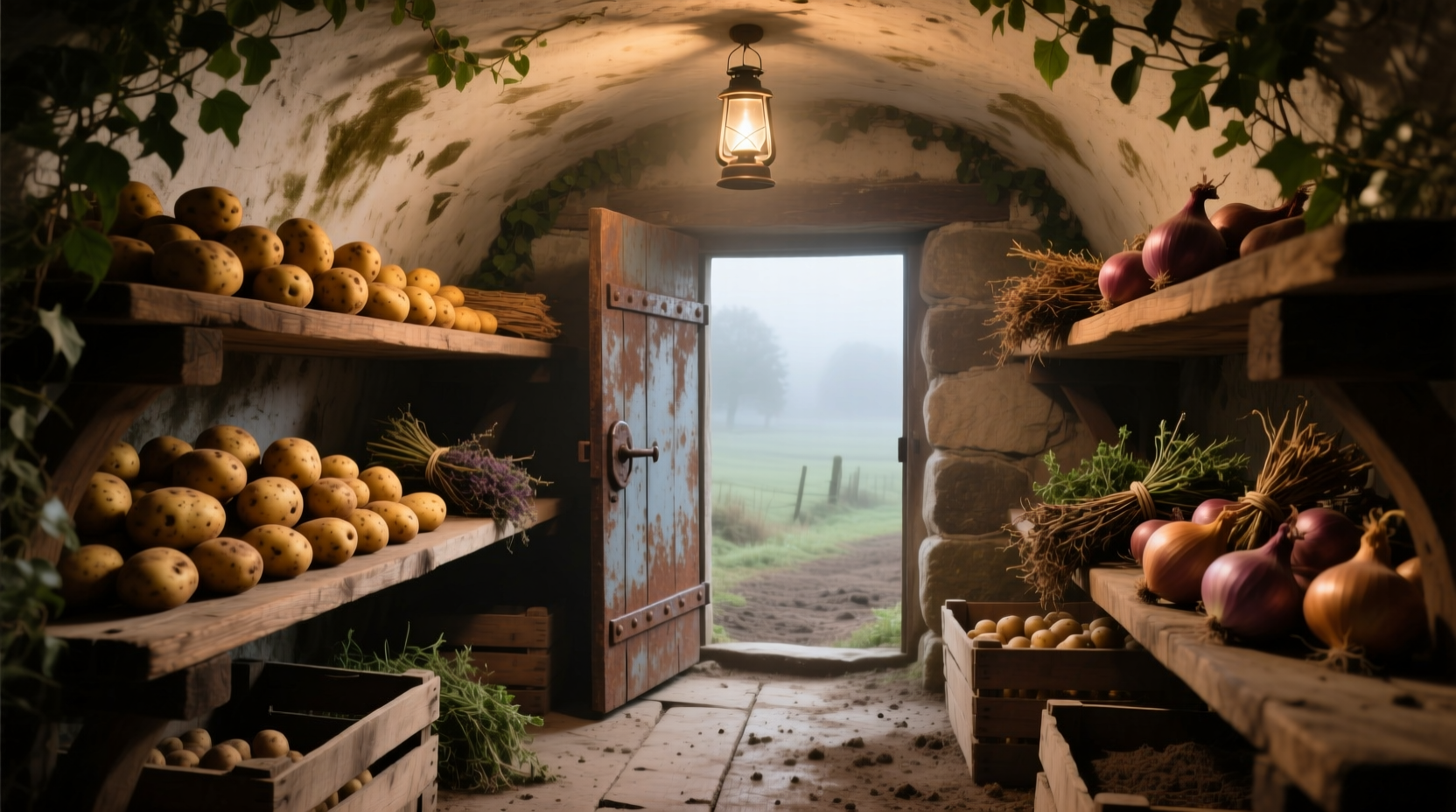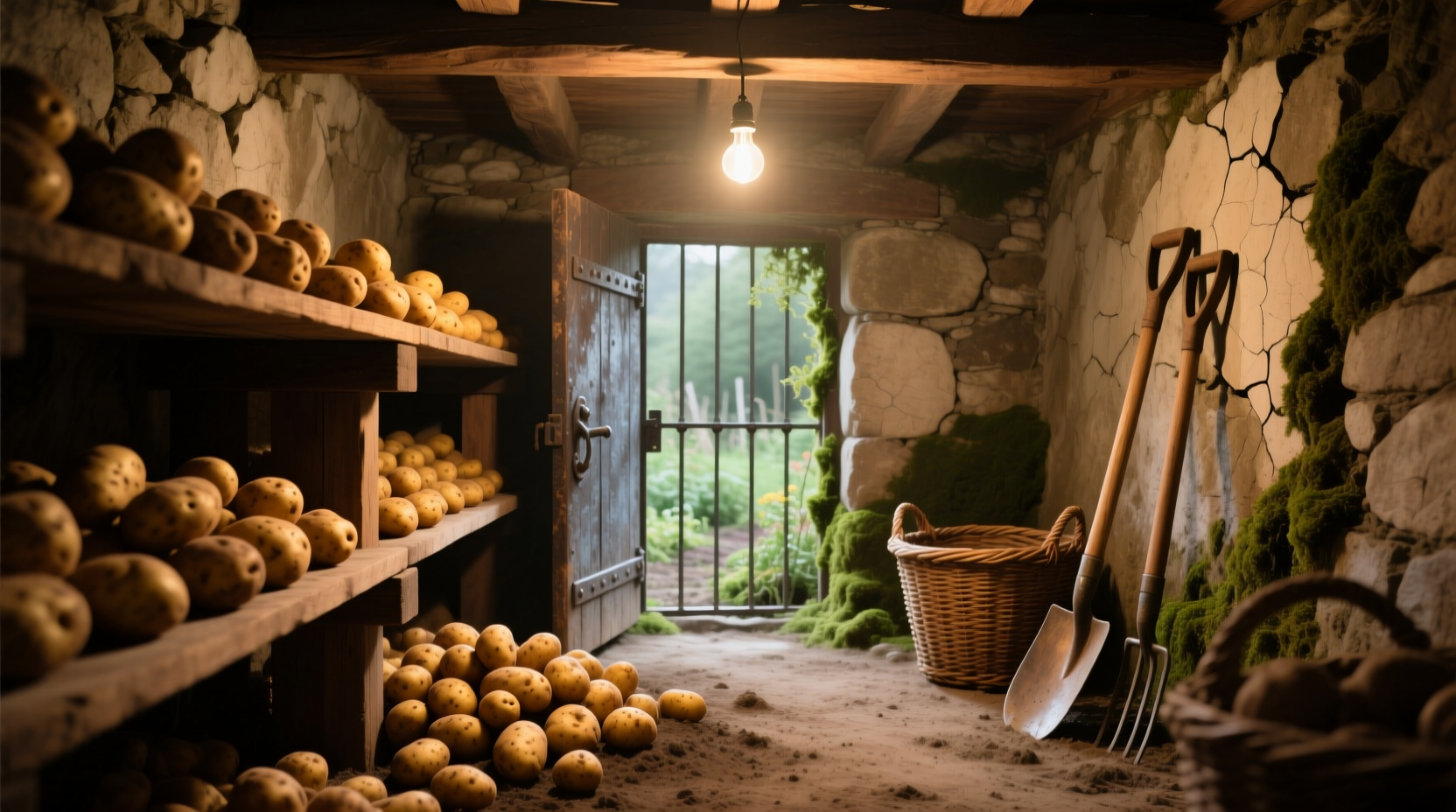Why Your Potatoes Keep Spoiling (And How a Cellar Solves It)
Most home gardeners lose 30-40% of their potato harvest within three months due to improper storage conditions. The USDA Agricultural Research Service confirms that potatoes stored above 50°F develop sprouts within weeks, while those below 40°F convert starches to sugars, causing undesirable sweetness. A well-designed potato cellar addresses these challenges by creating a stable microclimate that mimics the natural underground conditions where potatoes evolved in the Andes mountains.
The Science Behind Successful Potato Storage
Potatoes remain living organisms after harvest, continuing metabolic processes that affect quality. Cornell University's College of Agriculture and Life Sciences explains that tubers enter a dormant phase after harvest, which proper storage conditions can extend. During dormancy, potatoes resist sprouting and maintain nutritional value. The critical factors you must control:
| Storage Factor | Optimal Range | Consequence of Deviation |
|---|---|---|
| Temperature | 45-50°F (7-10°C) | >50°F: Sprouting begins; <40°F: Sweetening occurs |
| Humidity | 85-95% | <80%: Shriveling; >95%: Rot risk increases |
| Light Exposure | Total darkness | Causes greening and solanine production |
| Ventilation | Moderate airflow | Poor: Ethylene buildup; Excessive: Moisture loss |
Historical Evolution of Potato Storage Techniques
Indigenous communities in the Andes developed sophisticated potato preservation methods over 7,000 years. According to research published by the International Potato Center (CIP), traditional qullqas (storage structures) utilized natural mountain caves with controlled ventilation. European settlers adapted these techniques, evolving through distinct phases:
- Pre-1800s: Underground pits lined with straw, relying on natural earth insulation
- 1800-1920s: Purpose-built root cellars with stone walls and drainage systems
- 1920-1950s: Concrete construction with mechanical ventilation improvements
- Modern Era: Hybrid designs incorporating humidity sensors and passive cooling systems
Planning Your Potato Cellar: Location and Design Essentials
Your cellar's success depends on strategic planning. The University of Minnesota Extension recommends north-facing locations below the frost line for stable temperatures. Consider these critical design elements before construction:
Site Selection Criteria
- Soil composition: Sandy loam provides optimal drainage (avoid clay-heavy soils)
- Water table: Must be at least 3 feet below cellar floor level
- Proximity to home: Within 50 feet for monitoring access but separated to prevent pest migration
- Natural wind patterns: Position ventilation to leverage prevailing breezes
Size Calculation Guidelines
Allocate 1.5 cubic feet per 10 pounds of potatoes. For a typical family growing 200 pounds of potatoes, you'll need approximately 30 cubic feet of storage space. Remember to add 20% extra space for air circulation and access pathways.

Construction Process: Step-by-Step Implementation
Building a functional potato cellar requires careful execution. Follow this proven sequence used by successful homesteaders:
Foundation and Walls
- Dig 8-10 feet below grade to reach stable earth temperatures
- Construct 8-inch thick stone or concrete block walls with interior damp-proofing
- Install 4-inch drainage pipe around perimeter with gravel backfill
- Add vapor barrier between wall material and interior finish
Ventilation System Design
The most critical yet commonly misunderstood element. Purdue University's Department of Agricultural Engineering recommends dual-pipe systems:
- Intake pipe: 4-inch diameter PVC entering near floor level, sloped slightly downward outside
- Exhaust pipe: 6-inch diameter PVC exiting near ceiling, with adjustable damper
- Placement: Pipes positioned diagonally across from each other to create airflow
When a Traditional Cellar Won't Work: Alternative Solutions
Not all properties support traditional underground cellars. Recognize these limitations and implement appropriate alternatives:
Context Boundaries for Cellar Effectiveness
| Situation | Traditional Cellar Viability | Recommended Alternative |
|---|---|---|
| High water table | Not viable | Elevated insulated shed with cooling system |
| Rocky terrain | Difficult/expensive | Modified basement corner with climate control |
| Small urban property | Not feasible | Insulated garage corner with humidity tray system |
| Cold climate (zone 3 or lower) | Challenging | Heated root cellar with thermostat control |
Maintenance Protocols for Maximum Storage Duration
Proper maintenance separates successful potato storage from disappointing results. Implement these practices weekly:
- Temperature monitoring: Use analog thermometer (digital can fail in high humidity)
- Humidity adjustment: Add damp sand in trays during dry periods; use calcium chloride desiccant when too moist
- Regular inspection: Remove any soft or sprouting potatoes immediately to prevent contagion
- Seasonal preparation: Clean and lime-wash walls between storage cycles to prevent disease buildup
Common Storage Problems and Solutions
Even well-constructed cellars encounter issues. Address these common problems promptly:
Sprouting Prevention Techniques
If you notice early sprouting, reduce temperature to 45°F and increase ventilation. The University of Idaho Extension confirms that brief exposure to 32°F for 24 hours can reset the dormancy cycle without damaging tubers.
Mold and Rot Management
Isolate affected potatoes immediately. Increase ventilation and reduce humidity to 85%. Sprinkle food-grade diatomaceous earth between layers to absorb excess moisture and deter pests.
Frequently Asked Questions
Can I store other vegetables in my potato cellar?
Yes, but with important limitations. Potatoes emit ethylene gas that causes carrots and beets to become bitter. Store potatoes separately from most vegetables except onions and garlic, which actually help prevent potato sprouting when stored in mesh bags nearby.
How do I prepare potatoes for cellar storage?
After harvesting, cure potatoes at 50-60°F with 85-90% humidity for 10-14 days. Gently brush off soil (don't wash), then sort by size and condition. Discard any with cuts, bruises, or signs of disease before storage.
Why are my stored potatoes developing a sweet taste?
This indicates storage temperatures dropped below 40°F, triggering starch-to-sugar conversion. Return potatoes to room temperature for 1-2 weeks to reverse the process. For future harvests, install a temperature alarm system to prevent this issue.
How often should I check potatoes in storage?
Inspect potatoes every 2-3 weeks during the first two months, then monthly thereafter. The critical period is 60-90 days after storage when sprouting typically begins. Handle tubers gently during inspection to avoid bruising.











 浙公网安备
33010002000092号
浙公网安备
33010002000092号 浙B2-20120091-4
浙B2-20120091-4